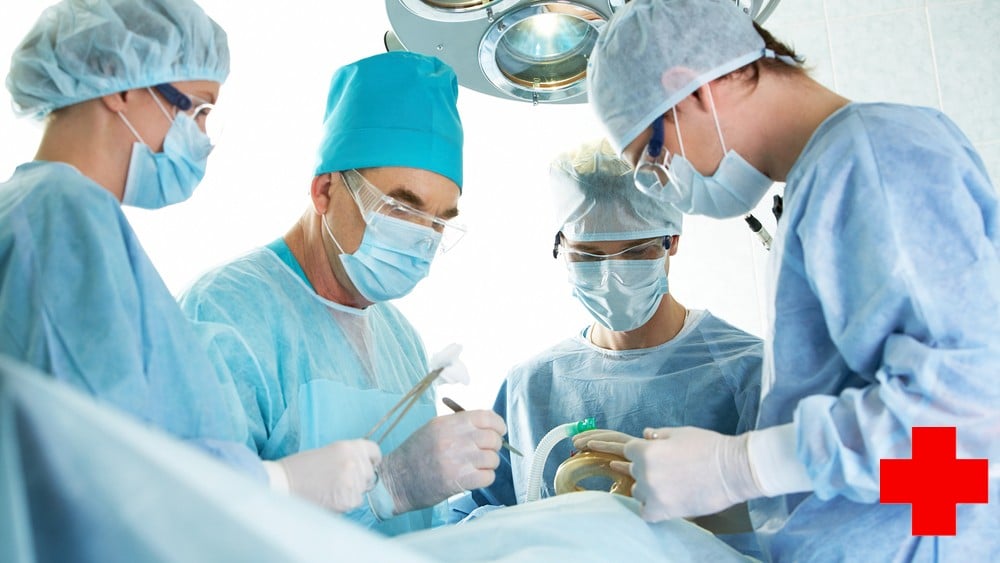Hello and welcome to another informational article about CNA Medical Terminologies.
This article will explain some major CNA Medical Terminologies, thus, increasing your knowledge base on CNA medical terms and their appropriate uses.
In this article, we shall explain the following:
- CNA Medical Terminologies – overview
- Common CNA Medical Roots
- Important CNA Medical Terminologies
So, relax, and let’s get started!
CNA Medical Terminologies – Overview

Medical Terminology is a unique vocabulary or language that healthcare professionals use to communicate accurately and effectively.
The root, prefix, and suffix are all components of medical terminology.
Therefore, knowing the definitions of the pieces can assist you in better comprehending the meaning of the entire word.
Common CNA Medical Roots

When you understand the fundamental meanings of these words, you’ll discover that mastering the CNA Medical Terminologies is rather simple.
Words containing the root dermat, for example, are about skin.
The following are some other popular roots and their meanings:
Cardio And Corono: Cardio is a combining form that can be used as a prefix to mean “heart.”
It appears in a variety of medical and scientific phrases.
Encephalo And Cerebro – is a combining form that can be used as a prefix to mean “brain.”
It is frequently used in medical terminology, particularly in anatomy.
Cranio – is a prefix for the term cranium, which refers to the skull, particularly the section covering the brain.
Dermato – is a combining form that means “skin,” and it’s used to make compound terms like dermatology.
Vasculo – is a compound form that denotes a blood vessel.
Phlebo And Veno – is a prefix that means “vein” and is a combining form.
It’s frequently used in medical terminology, particularly in pathology and anatomy.
The Latin term vēna is also the root of words like venous, which refers to veins.
Neuro – The term “neuro” refers to nerves and the nervous system.
Colo – is a prefix for “colon,” referring to the section of the large intestine that runs from the cecum to the rectum.
Osteo – is a compound word that means “bone.”
The word “osteo” comes from the Greek word “osteon,” which means “bone.”
Examples include osteoarthritis, osteochondroma, osteodystrophy, osteogenesis, osteomyelitis, osteopathy, osteopetrosis, osteoporosis, osteosarcoma, and other conditions.
Oto – is a prefix that refers to the ear, as in otology (the study and treatment of the ear) and otoplasty (ear surgery) (plastic surgery to reshape the outer ear).
Pneumo – is a combining form that means “lung” or “breath” and is used as a prefix.
It’s frequently used in medical terminology, particularly in pathology and anatomy.
Reno And Nephro – is a prefix that means “kidney” and is a combining form.
The word nephro- is derived from the Greek word nephrós, which means “kidney, kidneys.”
The Latin word for kidney is rēnēs, which gives words like renal.
Thoraco – is a combining form that means “thorax” and is used as a prefix.
The thorax, or chest, is the body region between the neck and the belly.
Cerebrovascular – The word “cerebrovascular” has two parts: “Cerebro” refers to the brain’s major portion, while “vascular” refers to the arteries and veins.
It refers to blood flow throughout the brain.
Blood clots and ruptured blood arteries in the brain cause cerebrovascular accidents (CVA).
Important CNA Medical Terminologies

The medical phrases you’ll need to know as a Certified Nursing Assistant can be learned using the medical roots.
However, you will come across various additional CNA Medical Terminologies throughout your career, and some of the most popular ones are included below.
Please remember that these are only a few of the terms you’ll come across during your CNA training.
Ambulate (AMB for short): is the ability to walk from one location to another without using assistive equipment.
Medical services provided without admission to a hospital or other long-term care facilities are referred to as ambulatory care.
Aphasia: is a disorder that prevents you from communicating.
It can affect your speech, writing, and comprehension.
Aphasia usually happens as a result of a stroke or a head injury.
Angina: It’s a sort of chest pain brought on by a lack of blood supply to the heart.
It’s a sign of heart disease.
Anterior: It refers to the front structure or a structure towards the front of the body in human anatomy.
Lateral: refers to a physical part or side of the body that is further out from the body’s central or center.
Posterior: is a term related to or pointing to the body’s back or caudal end.
Proximal: implies closer to the body’s core (trunk) or attachment site.
If another reference point, e.g., the heart, is specified, the proximal point of another organ or extremity is the central rather than peripheral point closest to the heart.
Aspirate: Removing fluid, tissue, or another substance with a needle is known as aspiration.
It can also refer to the accidental inhalation of food or liquid into the lungs.
Aseptic techniques are used to prevent or minimize the spread of infection.
The aseptic operating room also indicates free or devoid of pathogenic bacteria.
Atrophy: The wasting, thinning, or loss of muscular tissue is known as atrophy.
Contracture: A constant tightening of the muscles, tendons, skin and surrounding tissues causes the joints to shorten and stiffen.
It stops a joint or other body parts from moving normally.
Cyanosis: A bluish staining of the skin or mucous membrane is a symptom of a pathologic disease.
Cyanosis is derived from cyan, which refers to a blue-green tint.
Debacutis: Bed Sores, Lesions, or Ulcers
Dysphagia: is a clinical term for swallowing difficulties.
Dyspnea is a term for shortness of breath, difficulty, or labored respiration.
It is sometimes described as “air hunger.” It is an uncomfortable feeling.
Edema: it is an excessive fluid trapped in your body’s tissues.
Emesis: Oral eviction of gastrointestinal contents caused by stomach and thoracoabdominal wall muscle contractions.
Incontinent: Inability to regulate urine flow from the bladder or the release of feces from the rectum (urinary incontinence).
Logrolling: is a frequent patient-care procedure that many healthcare providers perform.
It keeps the spine aligned while rotating and transferring a patient with spinal surgery or a suspected or verified spinal injury.
Micturition: is emptying urine from the urinary bladder, which serves as a storage organ.
Prosthesis: is a device used to replace a missing body component or improve the function of a body part.
Prone Position: is the medical term for resting flat on one’s stomach.
Supine Position: is the medical phrase for resting flat on one’s back.
Trendelenburg Position: In preparation for a medical examination or operation, the patient is placed head-down on a table tilted at around 45 degrees from the floor, with the knees uppermost and the legs dangling over the table’s end.
Axillary: The axillary artery and vein are located beneath the junction of the arm or anterior appendage and the shoulder or shoulder girdle.
Hypoglycemia: You have hypoglycemia when your blood sugar level is lower than normal.
Vital Signs: The four to six most significant medical signals that show the status of the body’s critical (life-sustaining) functions are referred to as vital signs (also known as vitals).
Systolic: The blood pressure when the heart is contracting is called systolic blood pressure.
It is the highest arterial pressure in the heart’s left ventricle during contraction.
Diastolic: It is the pressure in the arteries between heartbeats.
It occurs when the heart receives oxygen and fills with blood.
Intravenous: typically refers to administering a drug or other substance into a vein using a needle or tube.
Transient Ischemic Attack: A short disruption in the blood flow to a portion of the brain causes a “mini-stroke.”
A shortage of oxygen to the brain occurs from an interruption in blood supply.
Fowler‘s Position: For neurosurgery and shoulder procedures, Fowler’s Position, also known as the sitting Position, is commonly employed.
Conclusion

As a CNA student or new professional, you’ll need to study many medical terms, acronyms, and abbreviations.
But on the other hand, understanding underlying meanings can make the process go more smoothly.
FAQs

What are the word parts of CNA Medical Terminologies?
Most medical terms have a fixed prefix, root, and suffixes. These word components are put together like building blocks to generate a huge vocabulary. Greeks are regarded as the forefathers of rational medicine, and the majority of medical words are borrowed from Greek and Latin.
When Is Medical Terminology Used?
Healthcare professionals use medical terminology throughout the patient’s treatment journey. When patients visit a hospital or a doctor’s office until they leave, healthcare providers rely on critical medical terminology to offer the best possible care.
Where can medical terminology be used?
Doctors, registered nurses and nursing assistants, pharmacists, medical assistants, and other health professionals use medical terminologies daily in the healthcare industry. Medical billing specialists also use it. Also, medical translators and insurance companies use these terms to document medical conditions, process claims, and enable patients to seek coverage.
Can I teach myself medical terminology?
Looking at the word to recall the meaning can train your brain for recollection because the human brain learns through visual cues. You can buy medical terminology flashcards, but building your own will help you learn the words and their definitions and retain them over time.
What is the range of motion in medical terms?
A joint’s range of motion refers to how far it can move in all directions. The range of motion attained when an external force (such as a therapist) induces movement of a joint is known as the passive range of motion, and it is usually the maximum range of motion.
What are “Activities of Daily Living”?
ADLs are tasks we perform in our daily lives, such as eating, bathing, clothing, grooming, working, homemaking, getting into and out of bed or chair, using the restroom, and relaxing. Therefore, the capacity or inability to do ADLs can be a useful indicator of ability or handicap.









